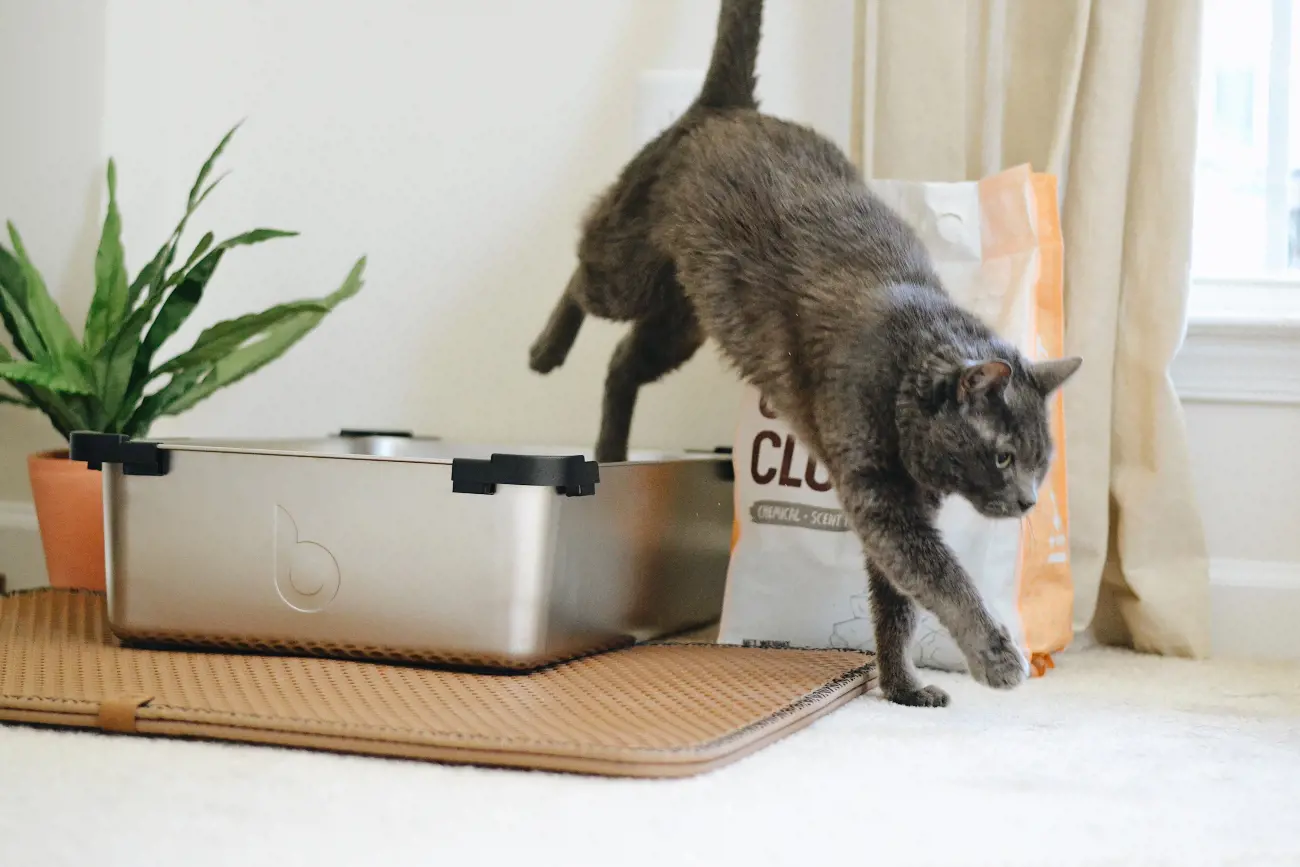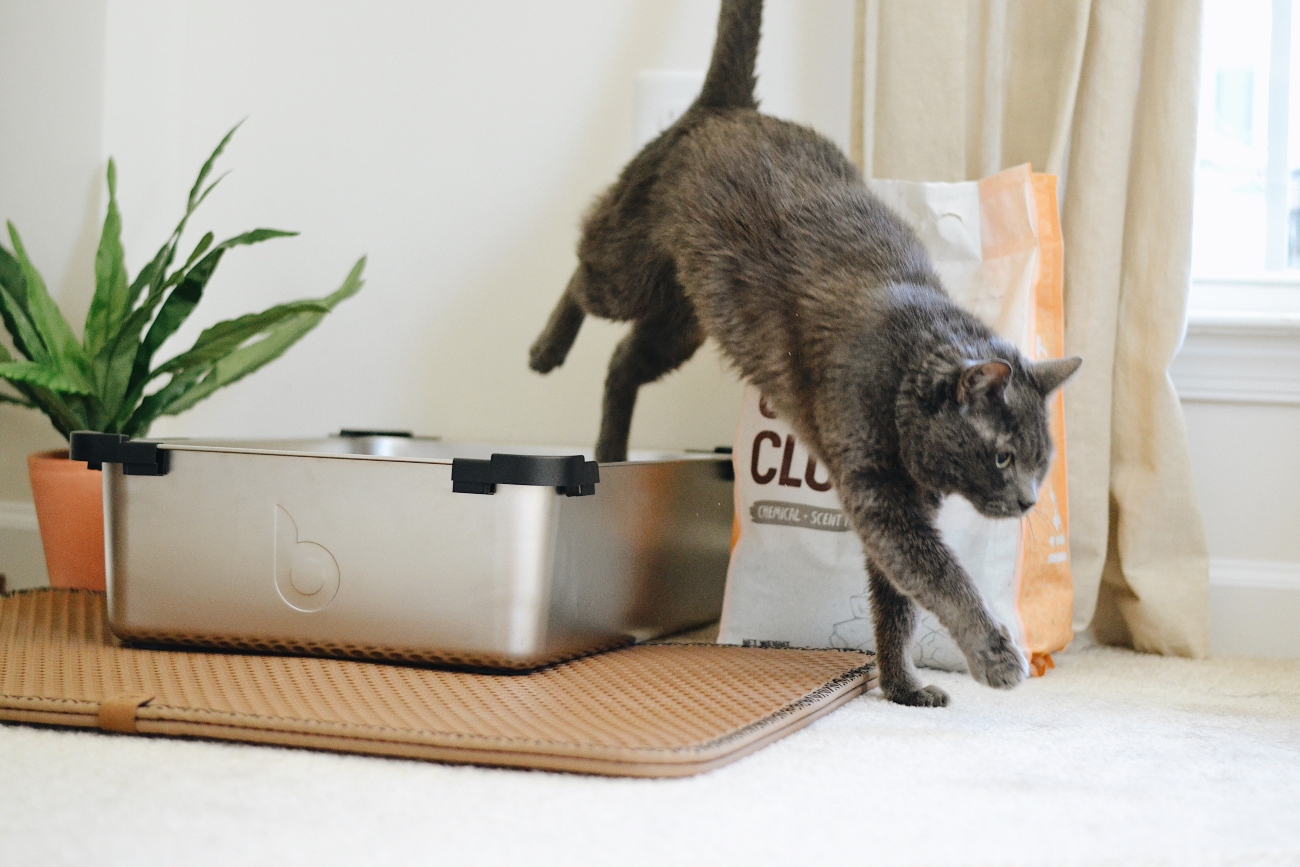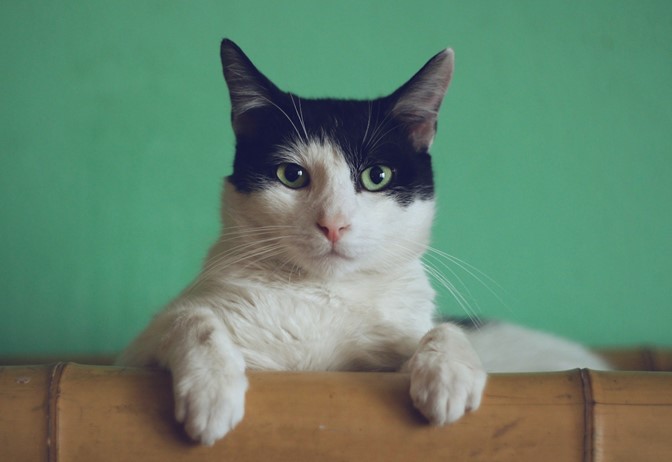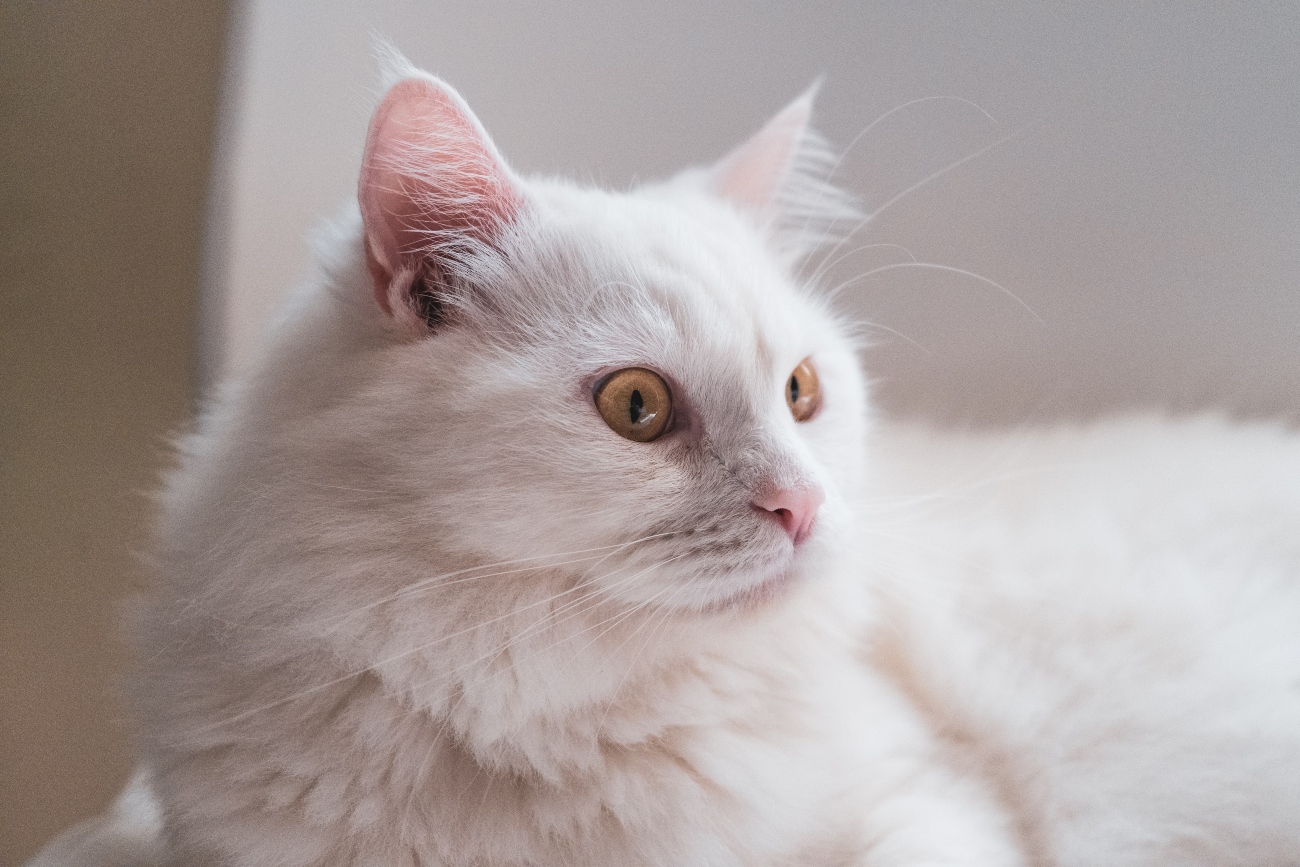Common cat toilet problems
23rd December, 2021

Cats can develop digestive problems or issues going to the toilet. These problems can be painful and, in some cases, serious. That’s why it’s important to recognise the warning signs.
Often, the causes and treatment will be straightforward and your cat will recover quickly. But sometimes there may be a more serious problem in the background, making medical attention necessary. If you have specialist cat insurance in place you won’t have to delay getting them the treatment they need.

The clue is in the poo!
Your cat's faeces can give you a lot of indications about their general health. So, next time you're cleaning out that litter tray, it's worth being vigilant for a few key signs that may indicate that all is not well with your cat's insides.
Most cats will poo at least once a day – and a healthy cat's stools should be a deep brown colour, neither too firm or too soft, and not smell too bad, although a certain amount of odour is perfectly normal.
Common toilet problems for cats
Diarrhoea
It's never a fun experience for us humans – and, unfortunately, cats can also be susceptible to diarrhoea. This relatively common condition can have a variety of causes; it might come and go within a day, or last for days, weeks or months. It can even, in some cats, be a regularly recurring event.
But what causes diarrhoea in cats? It could be one of the following things:
-
Colitis (inflammation of the colon)
-
Inflammatory bowel disease
-
Worms
-
Pancreatitis (inflammation of the pancreas)
-
Hyperthyroidism
-
Food intolerances
-
Changes to their diet
-
Cancer
Diarrhoea in itself shouldn't cause your cat too much distress. But can it bring other risks with it? As with some other cat complaints, it depends how long it lasts.
If your kitty gets a bout of diarrhoea lasting around a day or two, there shouldn't be any further problems that develop from it, although even a short bout like this can be a cause for concern in either very old or very young cats.
However, if the diarrhoea lasts longer, your cat risks becoming dangerously dehydrated. If it does seem to be persisting, take your cat to the vet or call our 24-Hour Vet Helpline for advice.
Similarly, if the diarrhoea is black or bloody, or if it is accompanied by other symptoms such as vomiting, fever, sluggishness, or a lack of appetite, it's definitely time to get in touch with your vet. Again, you’ll find it helpful, in the long run, to have some specialist cat insurance in place before the vet costs start to multiply.
How will diarrhoea be treated?
This will depend on what's caused the diarrhoea in the first place. For example, if it seems to have arisen from an inflammation of the colon or pancreas, medications such as metronidazole or prednisolone will probably be prescribed to control the inflammation.
On the other hand, the vet may decide that a food allergy or intolerance, or an inflammatory bowel disease has caused the problem. In this case, a temporary special diet will probably be the way forward. Or your cat may need to follow a short course of a deworming medicine.
There are some things you can do to reduce the risk of your cat succumbing to a bout of diarrhoea. For example, you should avoid any dairy products such as yogurt or milk, as many cats simply aren't able to digest dairy effectively.
Also try to avoid a sudden change in their diet or cat food brand, as this type of unexpected disruption can easily upset their tummy. Instead, make any food change gradual, slowly adding more and more of the new food into the old before switching it over completely.
Constipation
If your cat seems to be straining a lot when going to the toilet, or if their litter tray seems markedly emptier than usual, they may well be constipated. Now, it's important to note that constipation can affect all cats from time to time, and often it won't be all that serious – simply going away after a day or two.
However, if constipation is a frequent issue for your cat, you should ask your vet for some advice about what's happening and how it can be treated.

Causes of constipation
Like diarrhoea, constipation in cats can have a variety of causes. These include:
-
Insufficient fibre in their diet.
-
Over-grooming - this can lead to extra hair in the digestive tract, preventing a smooth digestion process.
-
Spinal problems or pain, making going to the toilet a painful experience
-
Kidney problems.
-
Megacolon - when the colon gets very large and can no longer contract. This causes dry, hard stools to build up inside the colon.
-
A foreign body blocking the colon, or a tumour developing.
-
One of a number of chronic diseases including hyperthyroidism, kidney disease and diabetes. Needless to say, the possibility of any one of these more serious conditions makes an urgent veterinary exam essential.
Other conditions that may accompany constipation
Constipation is often a symptom of some other underlying health problem. You may also notice some of these symptoms in behaviours in your cat. If you detect any of these, whether or not constipation is present, you should contact your vet as soon as possible:
-
Nausea and/or vomiting
-
Loss of appetite
-
An increase, or a decrease, in their drinking habits
-
Movement difficulties: a stiff walking style, or difficulties jumping
-
Weight loss
-
Muscle loss
How do you treat constipation in cats?
The treatment for feline constipation will depend on the cause. For example, if it's clear that your cat isn't getting quite enough fibre in their diet, your vet may recommend that you redress the balance with some high-fibre foods. Your cat may simply need food that's easier to digest – often they will need more wet food.
If an excess of grooming is resulting in frequent hairballs, there are hairball medications that can help break these down.
Whatever is causing it, a bout of feline constipation should be treated as soon as possible. Otherwise, it brings the risk of causing permanent damage to the colon, due to the latter being stretched for long periods of time.
Other treatments may centre around identifying and remedying the underlying disorder and preventing it from returning; and removing any impacted faeces within your cat's colon.
The most immediate thing your vet can do to help your cat may be to give them fluids – possibly via an enema, an injection of fluid into the lower bowel, via the rectum. Note that an enema is a job for the vet – don't try administering one at home! This is a specialist job that needs to be done by a professional – and which may be covered under your cat insurance policy if it’s an emergency.
Constipation: how you can help your cat at home
You can also do your bit by ensuring that your cat gets enough exercise and fresh water, both of which help to move waste through their body more efficiently.
Anxiety can also cause constipation in your cat, so if something has disrupted their usual routine - a new cat, a new person in the house, or a house move for example - this may also trigger the condition.
Weight management
Maintaining a healthy weight for your cat will help ward off constipation. Obesity in cats often brings with it an inflammation of the intestine, which means it works more slowly. Result: too much water gets absorbed from the cat's stool, causing constipation.
At its most extreme, obesity can mean that the tummy has too much fat for the stools to move through smoothly.
Your vet will be able to tell you if your cat needs to lose weight – and, if so, will work out a diet plan that works for you and your pet. You can also find a host of tips for getting your pet into shape elsewhere on our blog.
Hydration
Just like us, cats need to drink enough water to stay hydrated throughout the day. Cats don't naturally drink lots of water of their own accord, so if you need to boost their intake, it's a great idea to introduce some wet food into their diet. This will help to reduce the risk of constipation, too.
You can also try to get your cat to drink more by giving them more drinking options around your home. Set out more bowls, for example, upstairs and down, as well as out in the garden. You could also try a water fountain if they’re not keen on using bowls. And keep any water well away from their litter tray.
Exercise and enrichment
Exercise is another key part of the ‘good intestinal health’ jigsaw. If your cat is getting adequate daily levels of exercise, the digestive process should work more smoothly. You can help to ensure this by offering your cat toys, games, playtimes and time to roam outside.
Similarly, regular exercise will give your cat the enrichment and stimulus they need – which, as well as helping with weight loss, should bring down their stress and anxiety levels. We’ve got some useful advice on providing enrichment to your cat in this blog post.

Stress and anxiety management
Talking of stress, this is another factor that can play into digestion problems. High anxiety levels can prevent the digestive process working as it should. Now, while cats may seem like the calmest, most peaceful creatures around, they can be susceptible to spells of stress, specifically when their daily routines are altered.
As we’ve mentioned above, a house move, a new pet or baby in the house, even something apparently trivial like a change in their daily timetable or an increase in neighbourhood noise: these can all cause your furry friend unhelpful levels of stress, which in turn can disrupt the digestive process.
As often as not, your cat will just need some time to adapt to the changes in their life, and will soon resume eating and going to the toilet as normal. But you can also help to bring down their anxiety levels, whether it's via a calming pheromone, medications or something similar. As ever, consult with your vet before starting on any course of treatment.
Is your cat's litter tray still suitable?
If your cat does their business indoors, rather than finding a suitable spot outdoors, it's important for them to be happy with their litter tray.
Cats can be fussy here – they need the right sort of litter, in the right location (typically somewhere away from the house's main busy areas). If something's not quite right, they may not visit the litter tray as often, resulting in constipation.
Make sure they have their litter tray somewhere they feel comfortable. Space permitting, have a tray on each floor of the house. If you have more than one cat, make sure they have a few options, and aren't having to share the same tray.
Keep checking in with your cat
Constipation and diarrhoea can be painful in themselves: they can also signify something more serious. Given this, it's a good idea to keep a regular eye on your cat's toilet habits and on the consistency of their stools.
During and after a bout of constipation you should make an inspection at least twice a week: when things are back to normal you can reduce this to once a week or fortnight. If you notice any particularly dry, hard faeces, or if you can clearly see that your cat is straining or distressed while using their litter tray, you should contact your vet.
Let cat insurance cover the costs of care
Making regular checks on your cat’s digestion and toileting habits is one of the key things you can do to look after their health, and to provide them with the happy, healthy life that you want for them.
Another hugely helpful thing you can do is to take out some specialist feline insurance. Here at Purely Pets, we can offer you no fewer than 15 different levels of lifetime cover, to suit your particular needs and budget.
Get a quick quote for cat insurance today.
Helpful Pages
Recent Posts
Pet Insurance Quote
- 98% claims paid *
- Claims paid directly to vets
- 24/7 vet video consultations
- Interest free monthly payments




